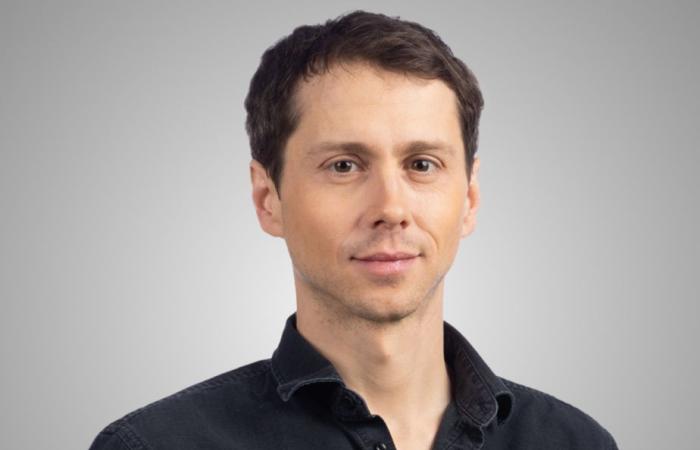Well done, but why did you do that? This is the question we want to ask the Legault government by reading the CDPQ Infra report. Because it is both precious for the population and devastating for them.
Published at 12:51 a.m.
Updated at 7:00 a.m.
It’s like Prankster Smurf giving presents that explode in your face. Except that in this case, the government is giving the gift to itself.
The report demonstrates that no road link scenario between Quebec and its South Shore significantly reduces congestion. And he proposes an ambitious public transport plan for the region, achievable in three phases, with a tram network as its backbone.
The contrast is striking between the rigor of CDPQ Infra and government improvisation. The report refutes every argument made by Quebec for a third road link and for its shriveled tramway route.
Either the CAQ government was lucid and anticipated that CDPQ Infra would reach this conclusion. He was looking for an emergency exit.
Either he is sincerely surprised by the conclusion. Which implies that he sold a project with marginal utility for mobility, at a pharaonic price and with disregard for the environmental impacts, trivializing the immense technical challenges.
CDPQ Infra was diplomatic. It leaves an option to Quebec to justify the construction of a third road link with the South Shore. This is the security argument. If the Pierre-Laporte bridge were to close temporarily, motorists would pile up on one bridge, that of Quebec. And trucks would have to make a long detour via Trois-Rivières, because the Quebec bridge is forbidden to them.
The Minister of Transport, Geneviève Guilbault, jumped on this buoy. However, last year, it promoted the construction of a tunnel which, because of the depth of the river, would have had a steep slope which would have seriously limited, and perhaps even prohibited, the transport of dangerous goods and products. …
With this file, she is wasting her credibility, a non-renewable resource.
Instead of relying on the feelings of motorists, CDPQ Infra looked at the data and made projections for the medium and long term.
Only 8% of traffic in the region is between the South Shore and Quebec. The flow rate there is “relatively low”. Among the six possible sections for a bridge or tunnel, the potential for decongestion is “low”. It would mainly be a displacement. We would redirect more cars on highways 40 and 440 which are already in overcapacity.
To justify abandoning the third link last year, Quebec claimed that teleworking had reduced congestion. On the contrary, experts show that teleworking does not have a significant effect most days. In short, it seemed like an excuse to save face.
For the CAQ, the main obstacle was the bill. But CDPQ Infra shows that the main problem is that of relevance.
After being firmly for the project, then against it from April 2023, the Caquists were once again in favor of it in October 2023, the day after their crushing defeat in Jean-Talon’s by-election. They then organized an unscientific consultation, which seems ridiculous in comparison with the rigor of CDPQ Infra.
Let’s stay positive: this report was a good idea, and a very nice public transport project is outlined there.
After being critical of the tramway promised by the former mayor of Quebec Régis Labeaume, the CAQ government asked him to propose a less expensive version.
CDPQ Infra does the opposite. Its network project is longer (28 kilometers instead of 19). It’s more consistent too. It takes up the aspects proposed by the mayor and his successor Bruno Marchand in order to connect the different developing sectors (La Chaudière, Charlesbourg, D’Estimauville) and to densify them.
This network will be supplemented by rapid bus services which would benefit from reserved lanes in order to be attractive.
For Mayor Bruno Marchand, it’s a blessing. He was bogged down with his tramway project, less and less popular, which he managed without having the expertise and for which he had not found a bidder.
For the CAQ government, this could also be an opportunity. By going ahead with the project, he will forget the procrastination that preceded it. And he will also be able to benefit from federal funding – after the probable election of Pierre Poilievre, it could be more complicated.
It then remains to negotiate with CDPQ Infra. This division of the Caisse de dépôt et placement is happy. It completes the REM. If it does not win the contract for the Quebec-Windsor high-frequency train, it will no longer have a project.
It will be necessary to ensure that its performance imperative is not to the detriment of taxpayers and users and that it will submit to consultations with the local population. An agreement must also be concluded with an operator – after constructing the project, CDPQ Infra would entrust management to local transport companies. Finally, it seems certain that the bulldozer mode of the first phase of the REM will not be repeated.
All that for that, we say to ourselves when reading the report… If the CAQ government follows the recommendations, we will remember this happy final chapter more than all those which preceded it. But for now, in Quebec, we are looking at this explosive package and wondering what to do with it. And by being very tempted to build a bridge to the East, even if it would require a detour which would worsen congestion on the other side of the river, according to CDPQ Infra.
We will soon see to what extent the CAQ is ready to squander what remains of confidence in it throughout Quebec to save a few seats on the South Shore.
Consult the CDPQ Infra report






